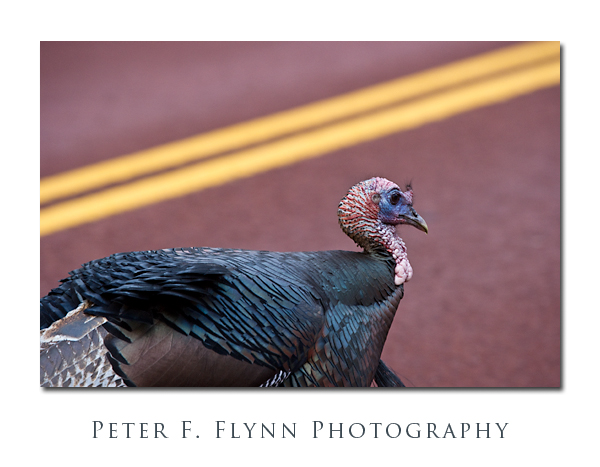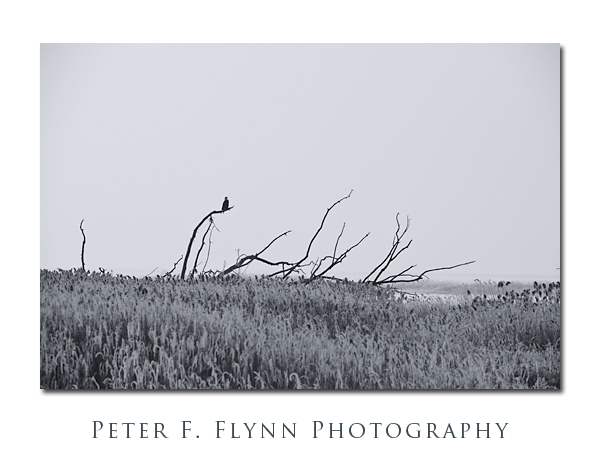
Snow on the ground…fog in the air (or is it still that inversion)…Farmington Bay is a starkly beautiful place this time of year. The proper name of the area is the Farmington Bay Waterfowl Management Area, and it is administered through the Utah Division of Wildlife Resources. The WMA is located about 25 miles north of Salt Lake City, UT, just a couple of miles off of I15, and just outside the city of Centerville.
The image above, of a Bald Eagle resting on a snag, was recorded on January 17, 2010 at about 13:00 MDT. This eagle did not move from its roost during the three or so hours that we were in the WMA. The eagles winter here, but don’t expect to see them flying around too much. Apparently this loafing behavior is part of their effort to conserve energy.
The eagle image was captured using the Nikon D3s and the AF-S VR Zoom-NIKKOR 200-400mm f/4G IF-ED lens at 240mm. Exposure was f/8 and 1/1250s, ISO 200. Image converted to BW using Nik Silver Efex Pro. The NIKKOR 200-400mm is the newest hardware acquisition, and was on test for the first time today. All of the images recorded for this entry were recorded with the D3s/200-400mm setup.
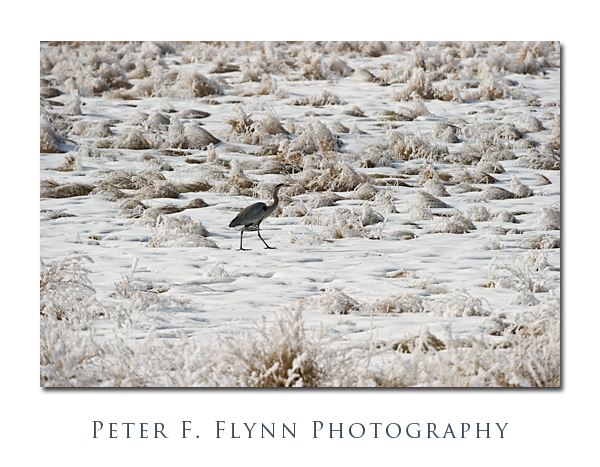 We saw several Great Blue Herons (the one above scarcely visible). Curiously, all but one of these were hunting, e.g., doing that stealth walk thing they do, not in the water, but on the snow covered marsh. Although I had normally thought of Herons as dining exclusively on fish (or water bugs and such), apparently they will go after small terrestrial critters when the situation calls for it. The image above was recorded at 13:43 MDT.
We saw several Great Blue Herons (the one above scarcely visible). Curiously, all but one of these were hunting, e.g., doing that stealth walk thing they do, not in the water, but on the snow covered marsh. Although I had normally thought of Herons as dining exclusively on fish (or water bugs and such), apparently they will go after small terrestrial critters when the situation calls for it. The image above was recorded at 13:43 MDT.
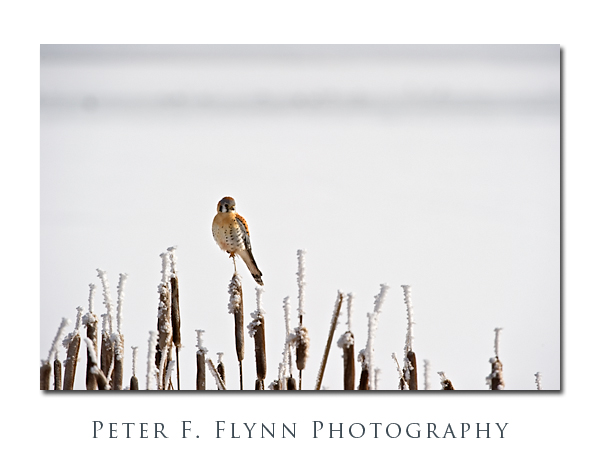
American Kestrels are among my favorite birds – not only for their coloring, which is lovely, but mostly for their behavior. You may find them calmly perched as above, but when they are active, they execute a most remarkable behavior. They will fly up next to the road to an altitude of about 50 or 60 feet, hover for a few seconds, and then dive close to the ground. They repeat this antic three or four times and then fly off. They are among the least skittish birds, and often seem content to perch very near the road. Image recorded at 14:00 MDT.
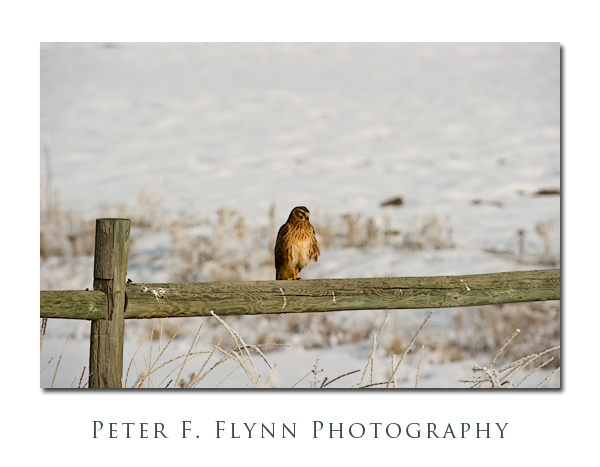 The image above is a Northen Harrier. My initial estimate was that this might be a juvenile bird, but I have still a lot to learn. Jack Skalicky, good friend and expert birder, adds the following: ‘It might be an adult female as most winter juvenile birds (2009 hatch year) would have a more rufous/orange in the chest, belly, flanks, and vent. This plumage is very bright. The streaking on this bird on a light background suggests an adult bird. I’m not sure of the molt timing in Northern Harriers but if they molt early in Utah this could easily be a first winter bird.’ Thanks Jack! The image was recorded at about 14:40 MDT.
The image above is a Northen Harrier. My initial estimate was that this might be a juvenile bird, but I have still a lot to learn. Jack Skalicky, good friend and expert birder, adds the following: ‘It might be an adult female as most winter juvenile birds (2009 hatch year) would have a more rufous/orange in the chest, belly, flanks, and vent. This plumage is very bright. The streaking on this bird on a light background suggests an adult bird. I’m not sure of the molt timing in Northern Harriers but if they molt early in Utah this could easily be a first winter bird.’ Thanks Jack! The image was recorded at about 14:40 MDT.
Copyright 2010 Peter F. Flynn. No usage permitted without prior written consent. All rights reserved.
It might be an adult female as most winter juvenile birds (2009 hatch
>>year) would have a more rufous/orange in the chest, belly, flanks, and
>>vent. This plumage is very bright. The streaking on this bird on a light
>>background suggests an adult bird. I'm not sure of the molt timing in
>>Northern Harriers but if they molt early in Utah this could easily be a
>>first winter bird.
